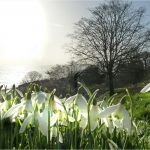Celebrate the first day of spring by helping Plantlife count Britain’s wonderful wildflowers.
Do you know your cowslip from your cow parsley? Or your buttercup from your butterbur? Plantlife are calling on people to spring into action and join the UK’s only annual wild flowers survey which will give nature a health check!

Sue Southway, who is leading Plantlife’s Wildflowers Count survey says: ‘Our survey is really simple and all our volunteers get a free colour guide of the wildflowers included. If you enjoy being outside, whether walking the dog, exercising children, or just for the pure enjoyment of seeing the seasonal changes around you, please get in touch.
The survey runs from the first day of spring right through to September and helps us to find out more about the flowers on YOUR doorstep! In the UK, we know lots about the really rare and threatened species but much less about how our more common wildflowers are doing. Last year our survey showed that creeping buttercup and cowslip were among the UK’s most common wildflowers where as stinking iris and alpine lady’s mantle were the least recorded. Our wild flowers aren’t just gorgeous they are vital to the survival of our wildlife; by tracking them we can see if they are increasing or decreasing in numbers, which, in turn, shows us how healthy our countryside is. You may be surprised by how many you know!’
Some of the fascinating wild flowers that could be on your doorstep:
Wood anemone – the delicate white stars of wood anemones can carpet the woodland floor in early spring. On warm days they often fill the air with a sharp, musky smell which in ancient times led locals to name the flower “smell foxes”, it’s also known as the windflower or grandmother’s nightcap.
Meadow buttercup – the glossy gold of buttercup flowers are known to every child; hold them under your chin and see the gold reflected by all those who love butter! In certain meadows buttercups are so dense their colour is dazzling under the May sunshine. In folklore beggars squeezed the juice from buttercups and applied it to their skin so it looked like blisters and would help them gain sympathy.
Foxglove – the pinky purple spires of our native foxglove are found on woodland edges, in hedgerows and waysides. The inside of the bells are freckled with darker purple and are often bobbing with bees looking for pollen. Despite their high toxicity, foxgloves became famous for the treatment of heart failure. Its leaves were used to slow the heart beat and help it grow stronger, which in turn stimulated the kidneys to clear the body and lungs of excess fluid. However the dosage was critical and if it was a fraction too high it could stop the heart all together!
To take part, simply log on to: www.plantlife.org.uk/things_to_do/
You can register for the 2014 survey by emailing wfc@plantlife.org.uk or leaving a message on our telephone hotline 01722 342755.
The survey runs from 20th March until 30th September 2014.




